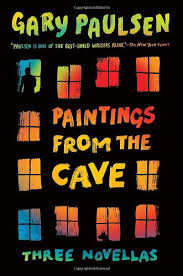The new school year has given me little time to write: I’ve been busy unpacking Lucy Calkins’ Units of Study for 8th grade and preparing my students for the writers’ workshop model. They are not quite ready yet, but we are getting a little closer every day. In this post, I will share with you some easy-to-implement strategies that have helped me and my students prepare. These easy hacks also create a safe and engaging environment for learning.
Anchor Charts, Anchor Charts, and More Anchor Charts
I was first exposed to anchor charts when I attended my first TCRWP Saturday Reunion at Columbia University last March. I have to admit that some of the fancy artistry intimidated me a bit. I was not used to making thinking visible. I am an English teacher, so explaining comes more naturally to me. I’ve realized, though, in the past few weeks, that these visuals are extremely helpful to my students. I know . . . Some of you may be reading this and thinking ,”Well, no kidding!” but the connection was not obvious to me until I implemented the practice. The charts that are relevant to our current studies are hanging around the classroom, and the students often leave their work stations to review the material on them.
I borrowed my first design from Kate Roberts. It shows students how to zoom in on a moment in narrative writing.

The example at the bottom of the image is an exact replica from Kate’s blog post on A Teaching Life in regards to format; I changed the story to describe my summer vacation. The example on top is the design adapted by one of my students. She found this model more workable for her. It’s not much different, but my version gave her the idea to create an ameliorated visual representation of her thinking process.
I’m not sure that I’d call this next example and anchor chart per se, but I refer to it every day when the students ask me how their work is going to be graded. I’ve adopted a four point scale for classwork and quizzes. It look like this:

I snagged this idea from eberopolis on blogspot. It makes grading a bit simpler and gives the students a clearer picture of their progress in meeting the standards.
Conferencing
I have not mastered this art yet–I’m still a novice, hopeful that I am on my way to understanding and managing this routine better. For the first few weeks of school, my students and I have been working on close reading and annotating texts with a focus. I’ve been monitoring their progress and evaluating their skills levels at different intervals. The short two to three minute conversations I’ve been conducting with students may be the most valuable time I have with them. When I take the time to meet with them individually, they take responsibility for their work, which in the long run, actually makes less work for me because they are holding themselves accountable for their success.
Mentor Texts
Once again, I am getting better at utilizing mentor texts, but I would probably consider myself a practitioner at this point. I have a discerning eye for good writing after all these years, but I am no Jeff Anderson! I began this practice like so many teachers do: by reading Everyday Editing. When I was reading the book last year, I used the examples that Anderson includes in his book and slowly progressed to using examples that I’d found in my own reading of young adult novels. Right now I am using Gary Paulsen‘s Man with the Iron Heads, which is one of the novellas in his book Paintings from the Cave. The book is rich with figurative language and description; plus, the students LOVE the story. A teacher knows when she’s made a good choice when she hears students exclaim in the middle of reading, “I love this book!” and “I wish we could keep reading!” Hahahaaa! Those moments are what make teaching so savory and delightful.

Acknowledgments
I must say, and I would be remiss if I did not mention that Angela Stockman, the founder and executive director of the WNY Young Writers’ Studio, has been an vital resource in helping me develop my skills through the change process. If you are not following her (which you can do on Facebook, Twitter, Pinterest, LinkedIn, and Google+), you are missing out. She has been one of the most valuable contacts in my professional learning network this past year. She also writes a blog where she posts many valuable resources. I personally grab many of her resources and ideas from Facebook, but she is willing to connect with educators from all experience levels.
Another source that I am indebted to is the Two Writing Teachers blog. Maggie B. Roberts and Kate Roberts are doing incredible work with young writers and writing.


What incredible company You’ve placed me in! Thank you! I love reflective posts like these. 💗
LikeLike
Thank you again for all your coaching, mentoring and encouragement. I am so grateful for my PLN. I would be a burnt out teacher without people like you!
LikeLike
Such wonderful professional mentors you have talked about here! I love them all. I am also working on the art of conferencing. I’ve come a long way from where I was, but I still have a ways to go. Good luck to you!
LikeLike
Do you have any suggestions, Jennifer? Do you have any advice?
LikeLike